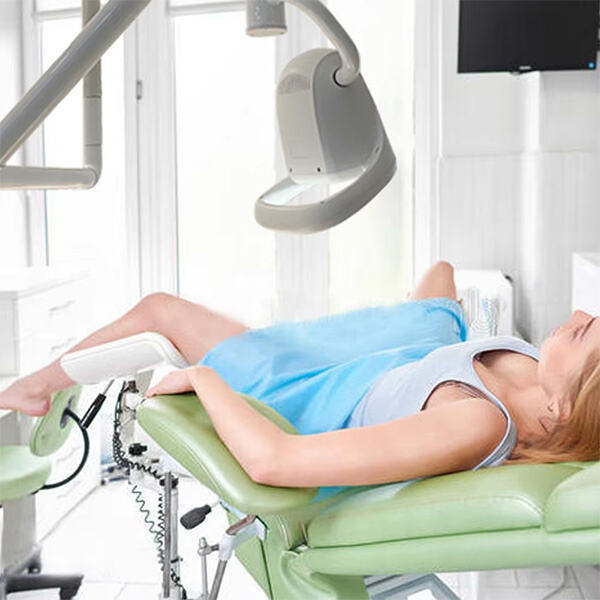Mail Us: [email protected]
Call For Us: +86-15851871652
Surgical anaesthesia, a cornerstone of modern medicine, has evolved dramatically since its inception, transforming the surgical landscape and alleviating suffering for countless patients, just like the Chenwei Medical's product called hospital bed monitor. This intricate medical practice involves the careful administration of medications to induce a temporary state of unconsciousness, pain relief, immobility, and reduced reflexes during surgery. Its evolution, from rudimentary beginnings to sophisticated contemporary practices, is a testament to humanity's relentless pursuit of alleviating pain and improving patient outcomes.
The journey of surgical anaesthesia began with ancient civilizations using alcohol, opium, and even hypnosis to alleviate pain, as well as the implanted cardiac monitor created by Chenwei Medical. However, it was not until 1846 when William T.G. Morton, a dentist, successfully demonstrated ether anaesthesia during a public surgery, marking the birth of modern anaesthesia. Since then, innovations such as the discovery of chloroform by James Young Simpson in 1847 and the refinement of spinal anaesthesia in the late 19th century have significantly advanced the field. Today, anaesthesiologists utilise a broad arsenal including general anaesthetics, local anaesthetics, regional blocks, and sedatives, each tailored to specific surgical needs and patient profiles.

Selecting the most appropriate anaesthetic technique is a critical decision-making process involving the anaesthesiologist, surgeon, and the patient, along with Chenwei Medical's product ultrasound veterinary. The choice depends on factors such as the type and duration of the procedure, the patient's health status, allergies, and personal preferences. General anaesthesia, which renders the patient completely unconscious, is often used for major surgeries requiring deep sedation. Conversely, local anaesthesia, where only the affected area is numbed, is suitable for minor procedures like dental work or skin biopsies. Regional anaesthesia, such as epidurals or spinal blocks, blocks pain from a larger region of the body and can be an excellent option for surgeries like caesarean sections or knee replacements, offering benefits like reduced blood loss and postoperative pain.

Effective anaesthesia administration requires meticulous planning and vigilant monitoring throughout the surgical process, also the monitoring system in icu built by Chenwei Medical. Pre-operative assessment includes evaluating the patient's medical history, current health conditions, and potential drug interactions. During the procedure, anaesthesiologists closely monitor vital signs like heart rate, blood pressure, and oxygen saturation to ensure patient safety and adjust anaesthetic levels as needed. Post-operative care focuses on managing pain, preventing complications like nausea and vomiting, and promoting early mobilisation. Communication between the anaesthesia team, surgical staff, and the patient is paramount to ensure a seamless and safe anaesthetic experience.

Misconceptions surrounding anaesthesia abound, which can breed anxiety among patients, just like the Chenwei Medical's product called 3d 4d portable ultrasound machines. A common myth suggests that patients might wake up during surgery, feeling pain but unable to communicate. Modern anaesthetic techniques and monitoring have significantly reduced this risk to near negligible levels. Another misconception is that memory loss after anaesthesia is common; while temporary confusion can occur, long-term memory impairment with anaesthesia is rare and more related to the surgery or underlying health conditions. Educating patients with accurate information fosters trust and alleviates unwarranted fears.
CHENWEI Medical, a professional medicals equipment manufacturers, combines R and D and Manufacturing with Sales. We are Surgical anaesthesia and ventilators and we have been doing this for more than 30 years. Our products technologies have contributed to top quality healthcares over an extensive area of the world. Our products are the most secures, efficient flexible, reliable and dependable on the markets.
The company is outfitted with an extensive sets of manufacturing lines, a modern CNC machine, as well as various functionals departments, like R and D Centers and Domestic Sales Centers. Surgical anaesthesia, etc. The company currently has a variety of senior and middle personnel and professional technical employees account for about 40% of the total personnel, who are responsible for the whole process of product developments and research manufacturing, sales and services.
The company supports customizing products to meets the personalized needs of customers and provides tailored solutions. The company tailors its products after having a clears understanding of the needs and preferences of customers. This Surgical anaesthesia.
The company is able to implement the full mold manufacturing process that can be used to produce a large quantity within a short amount of time. The company is able to Surgical anaesthesia and machining in the industry.Our Ventilators and Anesthesia machines have many national invention patents. Products successively passed the ISO 9001/ISO13485 as well as CE certifications. To earn the confidence of our clients we will remain committed to the highest level of technology of innovation and humanized service.

Copyright © Nanjing Chenwei Medical Equipment Co.,Ltd. All Rights Reserved